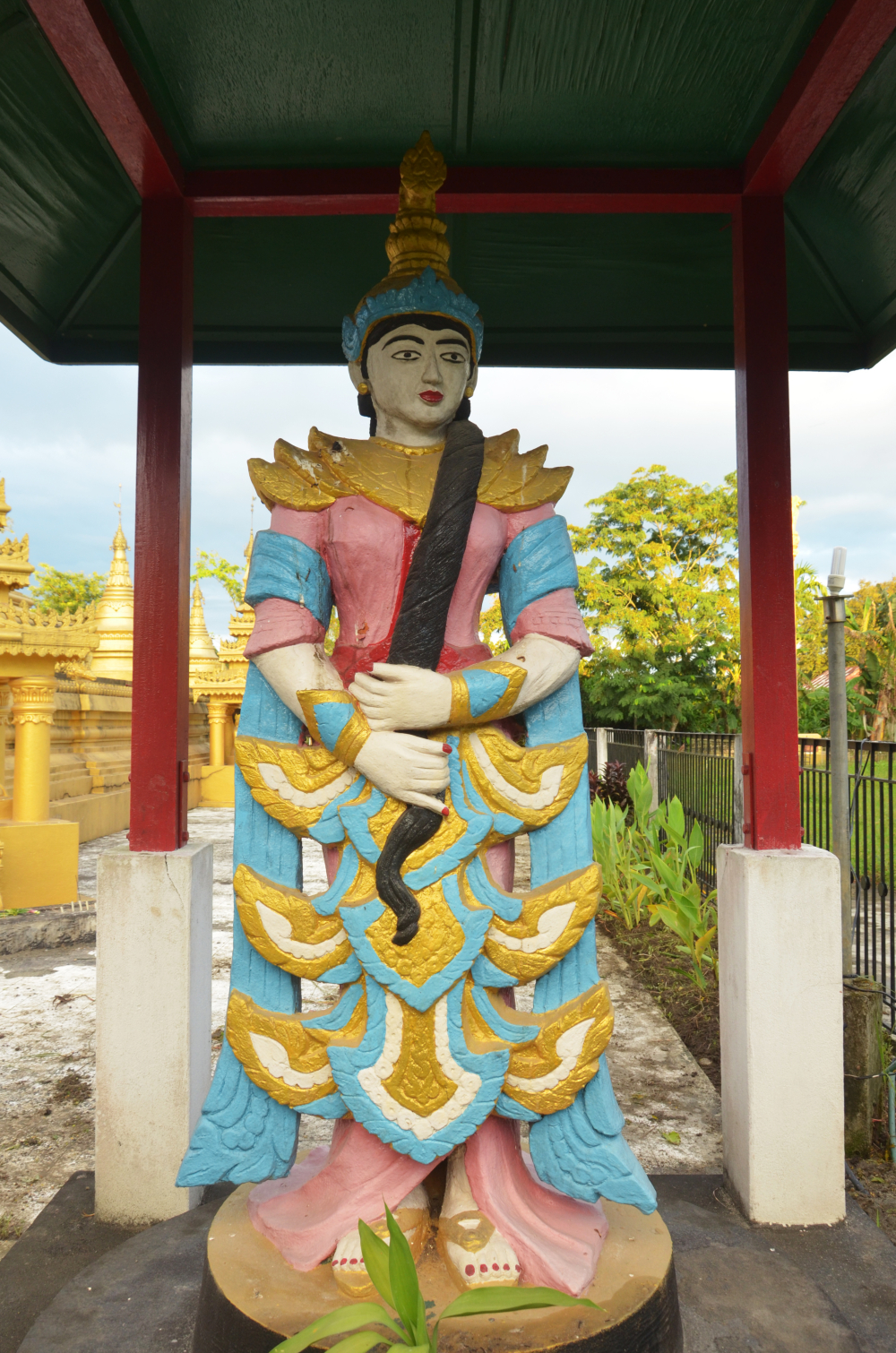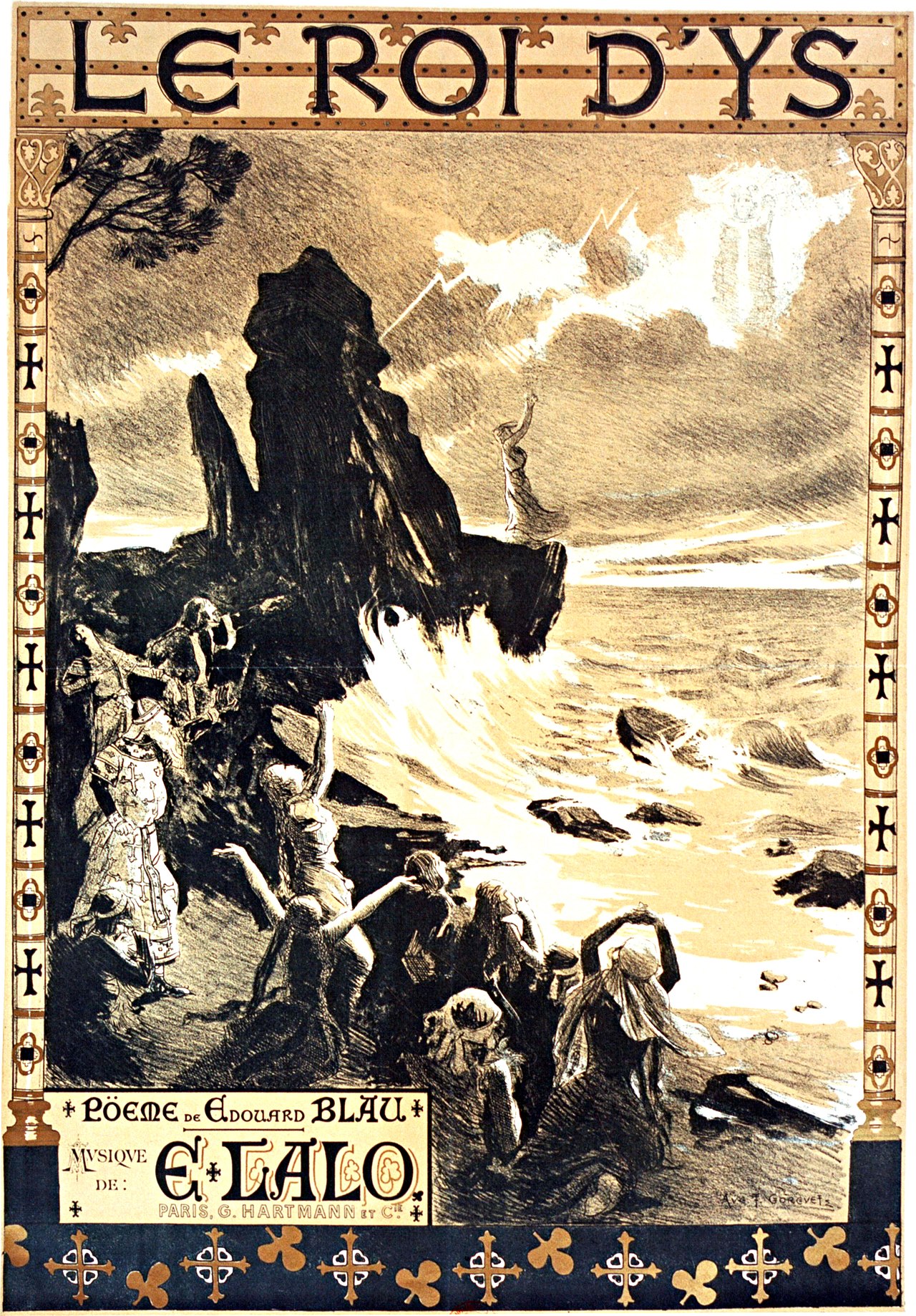
Gédéon Reverdin: Étude dessinée d’après le tableau d’une Scène de Déluge peint par A.L. Girodet (1828).
Here is the original painting by Girodet from 1806.

Gédéon Reverdin: Étude dessinée d’après le tableau d’une Scène de Déluge peint par A.L. Girodet (1828).
Here is the original painting by Girodet from 1806.
In Burmese Buddhism, the water ceremony, called yay zet cha, which involves the ceremonial pouring of water from a glass into a vase, drop by drop, concludes most Buddhist ceremonies including donation celebrations and feasts. This ceremonial libation is done to share the accrued merit with all other living beings in all 31 planes of existence. While the water is poured, a confession of faith, called the hsu taung imaya dhammanu, is recited and led by the monks. Then, the merit is distributed by the donors, called ahmya wei by saying Ahmya ahmya ahmya yu daw mu gya ba gon law three times, with the audience responding thadu, Pali for “well done.” The earth goddess Vasudhara is invoked to witness these meritorious deeds. Afterward, the libated water is poured on soil outside, to return the water to Vasudhara. (from Wikipedia)
Burma; Budhism; Ritual, Ceremony
This painting shows a scene from early buddhist texts from the 3. and 4. Century AD: When Mara, the God of Death, attacked Siddhattha, Siddhattha called on Vasundhara, also referred to as Bhumi or Mother Earth, to save him. Vasundhara creates a massive flood by wringing her long hair and ths drowning all the adversaries. Here Siddhattha, later to become Buddha, can be seen seated and meditating in a small tower high above the flood created by Vasundhara. The image is from the 19. Century. As Christian Rohr notes, the image of Vasundhara wringing her hair is particularly popular in modernity. Today it is a popular talisman in Thailand and Burma.

Thailand; 3. Century AD; Buddhist; Painting, Sculpture

“Le roi d’Ys” is an opera by French composer Édouard Lalo (1823 – 1892), to a libretto by Édouard Blau, based on the old Breton legend of the drowned city of Ys (assumed geographical location).
Thanks to Stephan Wagner for the reminder.
USA; 20. Century; Christian; film; City: New York
“Only man knows natural disasters, so far as he survives them. Nature does not know disasters.”
“Katastrophen kennt allein der Mensch, sofern er sie überlebt; die Natur kennt keine Katastrophen.“
from: Max Frisch: Der Mensch erscheint im Holozän. (1979)
The German term “Katastrophe” (Catastrophe) stems from the Greek name for a sudden turn of events and in antiquity was commonly used to describe a plot twist in a comedy. The English “disaster” literally means “bad star”. G. J. Schenk speculates that the usage of the term was made popular by the stories of Sindbad The Sailor in the Middle East in the 17th Century.
Switzerland; 20. Century; Christian; Literature
“Noye’s Fludde” is an opera by british composer Britten from 1958 based on the Noah myth. It premiered in England just 5 years after the great North Sea Flood of 1953.
UK; 20. Century; Christian; Music, Opera; Noah
Strabo, a Greek geographer and historian whol lived from around 60 BC to 20 AD writes in his Geographica:
“For the sea was raised by an earthquake and it submerged Helice, and also the temple of the Heliconian Poseidon, whom the Ionians worship even to this day, offering there the Pan-Ionian sacrifices. … Helice was submerged by the sea two years before the battle at Leuctra. And Eratosthenes says that he himself saw the place, and that the ferrymen say that there was a bronze Poseidon in the strait, standing erect, holding a hippo-campus in his hand, which was perilous for those who fished with nets.
And Heracleides says that the submersion took place by night in his time, and, although the city was twelve stadia distant from the sea, this whole district together with the city was hidden from sight; and two thousand men who had been sent by the Achaeans were unable to recover the dead bodies; and they divided the territory of Helice among the neighbours; and the submersion was the result of the anger of Poseidon, for the Ionians who had been driven out of Helice sent men to ask the inhabitants of Helice particularly for the statue of Poseidon, or, if not that, for the model of the temple; and when the inhabitants refused to give either, the Ionians sent word to the general council of the Achaeans; but although the assembly voted favorably, yet even so the inhabitants of Helice refused to obey; and the submersion resulted the following winter; but the Achaeans later gave the model of the temple to the Ionians.”
thanks to Jasmin Hettinger for the lead.
John Malalas (Greek: Ἰωάννης Μαλάλας, Iōánnēs Malálas) was a Byzantine writer who lived around 500 CE. In his Chronicles he records the following story from Constantinople:
“In the 5th of the Indiction such a thing happened: a woman who lived near the Golden Gate was hung up one night, and talked a great deal, so that the crowds in Constantinople came running, and they went away singing hymns to the church of St. Diomedes of Jerusalem, and they brought down the woman from her house and took her to the church of St. Diomedes. She said that after three days the sea would rise and take everything.
All were singing hymns and shouting ‘Lord have mercy.’ It was rumored that many cities had been swallowed up.
At that time in Egypt and Alexandria a plague was occurring. The King sent Narses the cubicularius with light, fast boats and some others to learn what was happening. The children of Narses went as his emissary to St. Diomedes. They learned from the assembled crowd what the woman had said. They came and reported to Narses what was happening in the church, and that they heard from the hanged woman that after three days the sea would rise and drown everything. The crowd heard what she said and went away distraught.”
thanks to Jasmin Hettinger for the tip.
Greek historian Diodorus Siculus (1. Century BC) writes:
“At this time occurred the third inundation of the city of Rhodes, which destroyed many of its p353 inhabitants. Of these floods, the first did little damage to the population since the city was newly founded and therefore contained much open space; the second was greater and caused the death of more persons. The last befell at the beginning of spring, great rain storms suddenly bursting forth with hail of incredible size. Indeed, hail-stones fell weighing a mina (94) and sometimes more, so that many of the houses collapsed because of the weight, and no small number of the inhabitants were killed. Since Rhodes is shaped like a theatre and since the streams of water were thus deflected chiefly into a single region, the lower parts of the city were straightway flooded; for, because it was thought that the rainy season of winter had passed, the drains had been neglected and the drainage openings through the city walls had become clogged. The water that suddenly gathered filled the whole region about the Market and the Temple of Dionysus; and then, as the flood was already advancing to the Temple of Asclepius, all were struck with fear and began to follow various plans for gaining safety. Some of them fled to ships, others ran to the theatre; certain of those overthrown by the calamity in their extremity climbed upon the highest altars and the bases of statues. When the city and all its inhabitants were in danger of being utterly destroyed, relief of a sort came of itself; for, as the walls gave way over a long stretch, the water that had been confined poured out through this opening into the sea, and each man soon returned again to his former place. It was to the advantage of those who were endangered that the flood came by day, for most of the people escaped in time from their houses to the higher parts of the city; and also that the houses were not constructed of sun-dried brick but of stone and that for this reason those who took refuge upon the roofs were safe. Yet in this great disaster more than five hundred persons lost their lives, while some houses collapsed completely and others were badly shaken.
Such was the disaster which befell Rhodes.”
Greece; 1. Century BC; Pagan; Literature; City: Rhodes